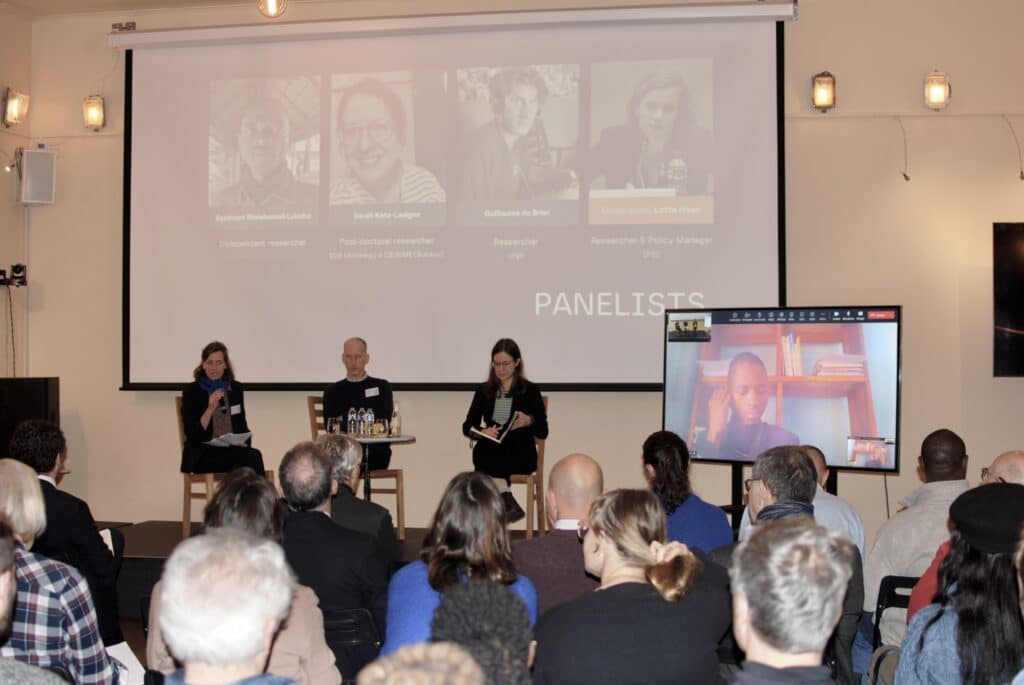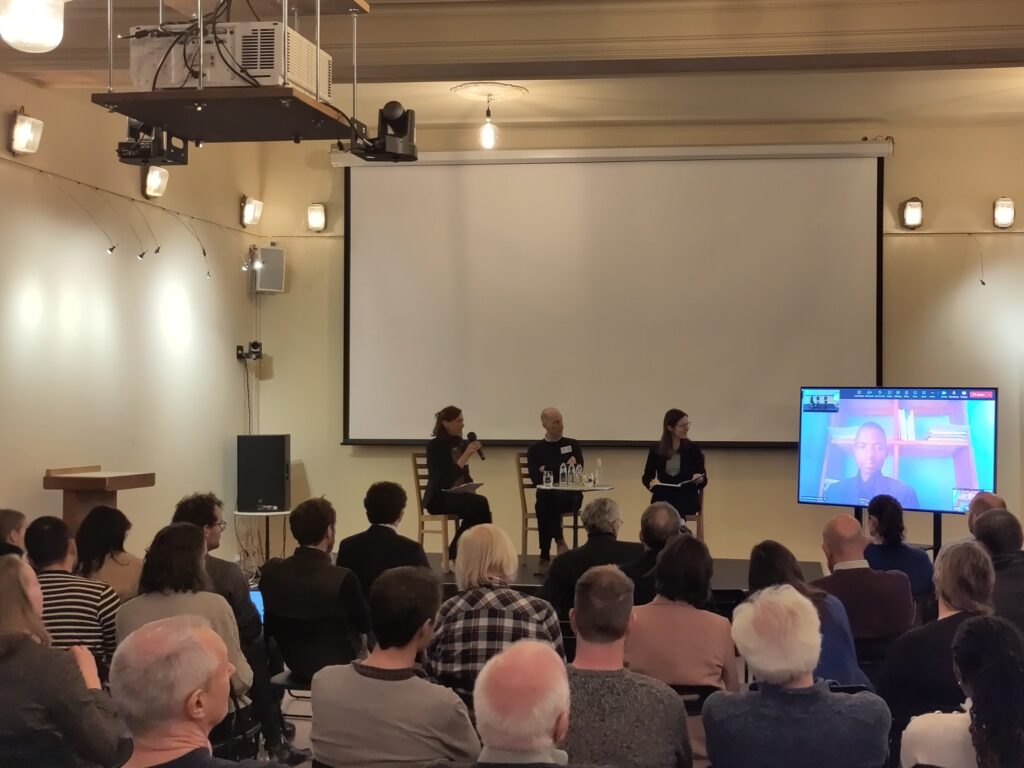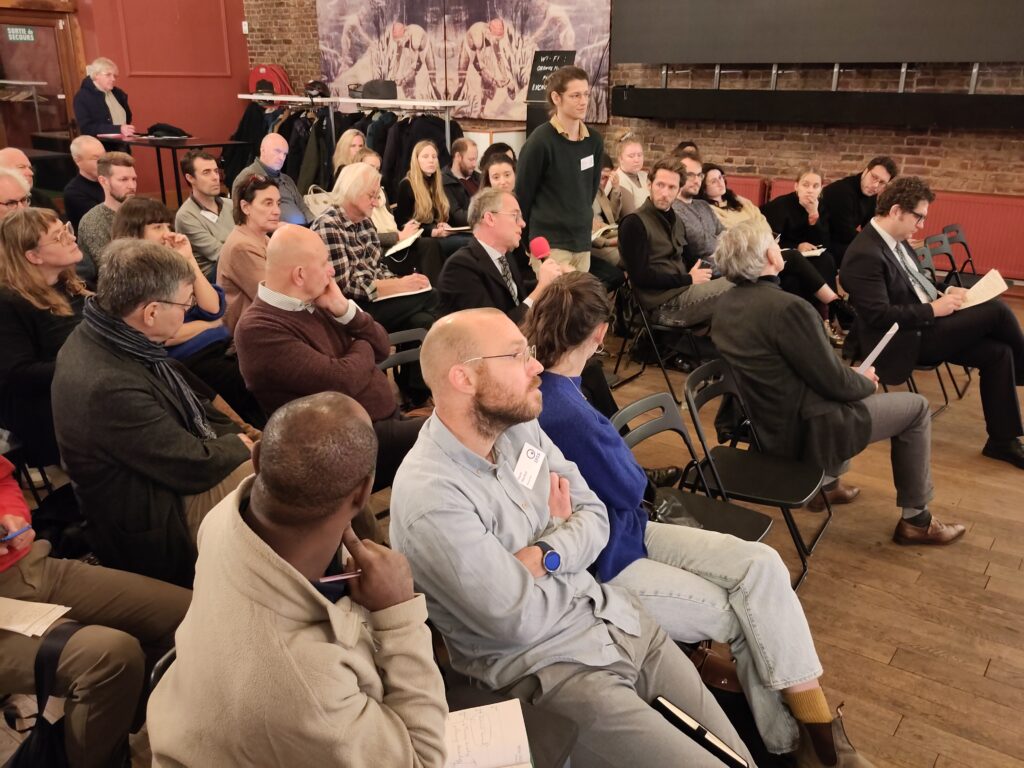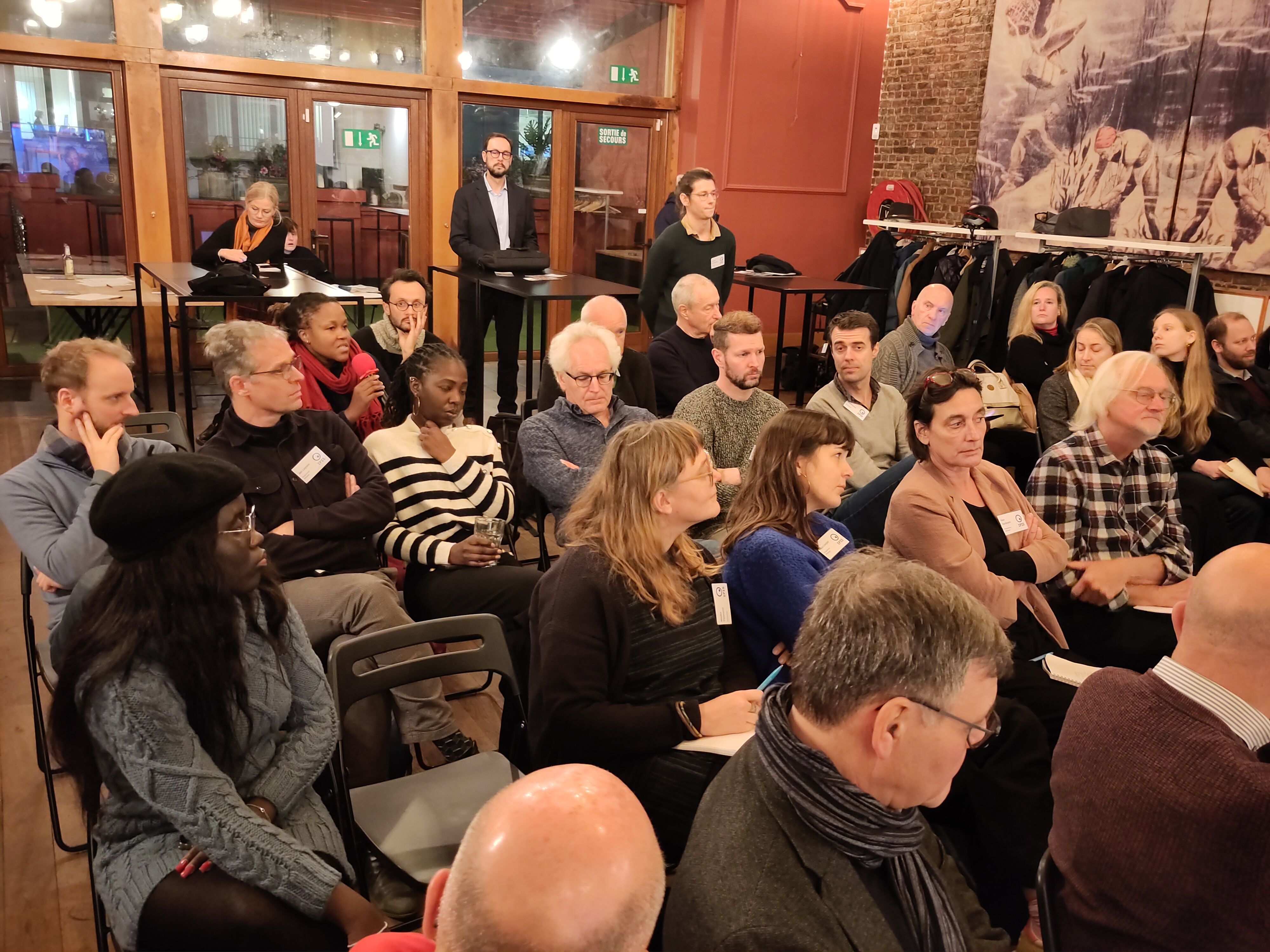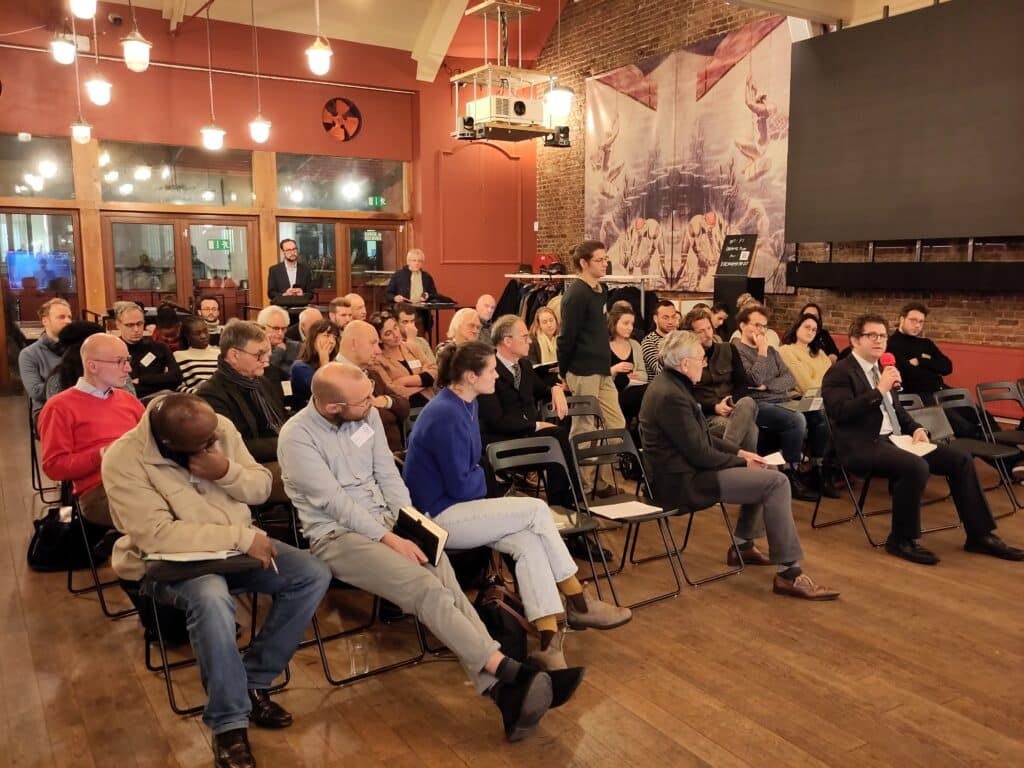On the 30th of November, IPIS hosted its annual panel discussion, this time on current challenges facing the cobalt sector in the Democratic Republic of the Congo (DRC) and the potential impact of European Union (EU) regulations to improve these. Moderated by Lotte Hoex, the panel consisted of Esperant Mwishamali, independent researcher on cobalt artisanal and small-scale mining (ASM) in the DRC, Sarah Katz-Lavigne, from the Institute for Development Policy of the University of Antwerp and the Centre of Expertise on Mining Governance (CEGEMI) of the Université catholique de Bukavu, and IPIS researcher Guillaume de Brier.
Currently, the DRC accounts for 60-70% of global cobalt production, primarily sourced from and refined in Chinese-owned large-scale mines and refineries. About 20% of the Congolese cobalt production is mined artisanally. As Europe continues to pursue its transition to renewable energy technologies, the current context presents two opportunities: firstly, to address dependency on Chinese cobalt, and secondly, to improve the socio-economic situation of miners at the production level. It is in this context that the EU Critical Raw Material Act and EU Battery Regulation have been conceived.
ASM cobalt in the DRC: challenges, markets, and Chinese investment
Joining the panel from Lubumbashi, Esperant emphasized that improving conditions at the production level means facing a plethora of challenges. Many of these are linked to the often-informal character of artisanal cobalt mining. For instance, confusion over concession claims leads to frequent conflicts over land rights between mining companies, artisanal miners and communities. A lack of regulated oversight often leads to miners working without proper protection, equipment or compensation. Informality also limits the participation of miners in key agreements within the sector. Considering this, artisanal cobalt miners desire improvements in their working conditions, sector governance, and a rise in the price of cobalt, allowing them to reap benefits for themselves and their dependents.
Meeting such demands may require creative solutions. Turning to Sarah, the moderator proposed the entry of ASM mined cobalt onto the EU market. However, the former warned that presupposing a linkage between mining conditions and the sale of cobalt on the European market could be misleading. ASM cobalt already reaches the EU in the form of Chinese-produced end-products such as batteries. Attempts to expose artisanally mined cobalt to an open market have also proved unfavorable to miners due to irregularities in pricing technologies. Finally, there is a reluctance among key actors in the mining sector to support ASM. The Congolese government appears to prioritize large scale industrial mining, while policymakers tend to favor the concerns of downstream corporations and states over those of artisanal miners. Consequently, regulation has focused on ensuring supply chain integrity through emphasis on traceability and due diligence, rather than the secure working conditions, protection, and representation desired by miners.
Despite these challenges, the OECD still recommends investment in areas with potential human rights issues. In other words, the OECD encourages risk mitigation policies in fragile areas, not “disengagement” as some investors do to avoid reputational risks. Expanding on potential European involvement in the Congolese mineral sector, Guillaume argued that current EU efforts to do so have centered on drafting policies, such as the Conflict Minerals Regulation, to break links between armed conflict and minerals such as tin, tantalum, tungsten and gold (3TG). These efforts have, however, been eclipsed by the dominance of Chinese direct investment. Often based on outdated understandings of minerals as a source of conflict, these EU regulations have failed to reduce violent instability and illegal artisanal mining practices. Instead, they privilege EU concerns with little consideration for the impact of regulation on communities dependent on ASM.
How can the EU proceed: investment?
According to Esperant and Guillaume, a possible way forward for Brussels is through direct investment in the Congolese ASM cobalt sector. Doing so could improve the material conditions of miners. It could also professionalize the sector, bringing in oversight, training, and increased on-the-ground enforcement of regulations. Finally, investment in artisanal mining would be in line with EU values, constituting an important contribution to upholding human rights.
Importantly, direct investment in the ASM sector would provide the EU with leverage in the Congolese cobalt sector, leverage it currently does not wholly possess. Since the LSM sector is currently running at maximum capacity, investment in ASM would provide EU industries with an alternative source of cobalt to meet ever-growing demand, while also improving resource autonomy.
However, noted Guillaume, the EU should not solely focus its attention on simply accommodating increased demand. Brussels should also control demand for critical minerals by developing an industrial plan, prioritizing the requirements of industries with an important role in the technological and energy transitions, while curtailing use of cobalt for general market consumption.
Discussion: feasibility, insecurity, and regulations
Rounding off the event, the audience raised questions regarding European economic competition with China, but also on the feasibility of investment. Discussions with the panel on the Conflict Minerals Resolution and the Critical Raw Materials Act brought attention to the varied impact which the framing of a regulation can have. Meanwhile, reflections on rising demand for cobalt and the privileged treatment of industrial mining over artisanal miners in sector policy raised the specter of violent conflict. Finally, considerations on the tendency of regulations to focus on upstream, rather than downstream actors, gave the audience a chance to think about why, how, and for whom regulations are written.
This event was supported by the European Union and the Belgian Development Cooperation.

